Headline
Add text here
Headline
Add text here
Add text here
Add text here
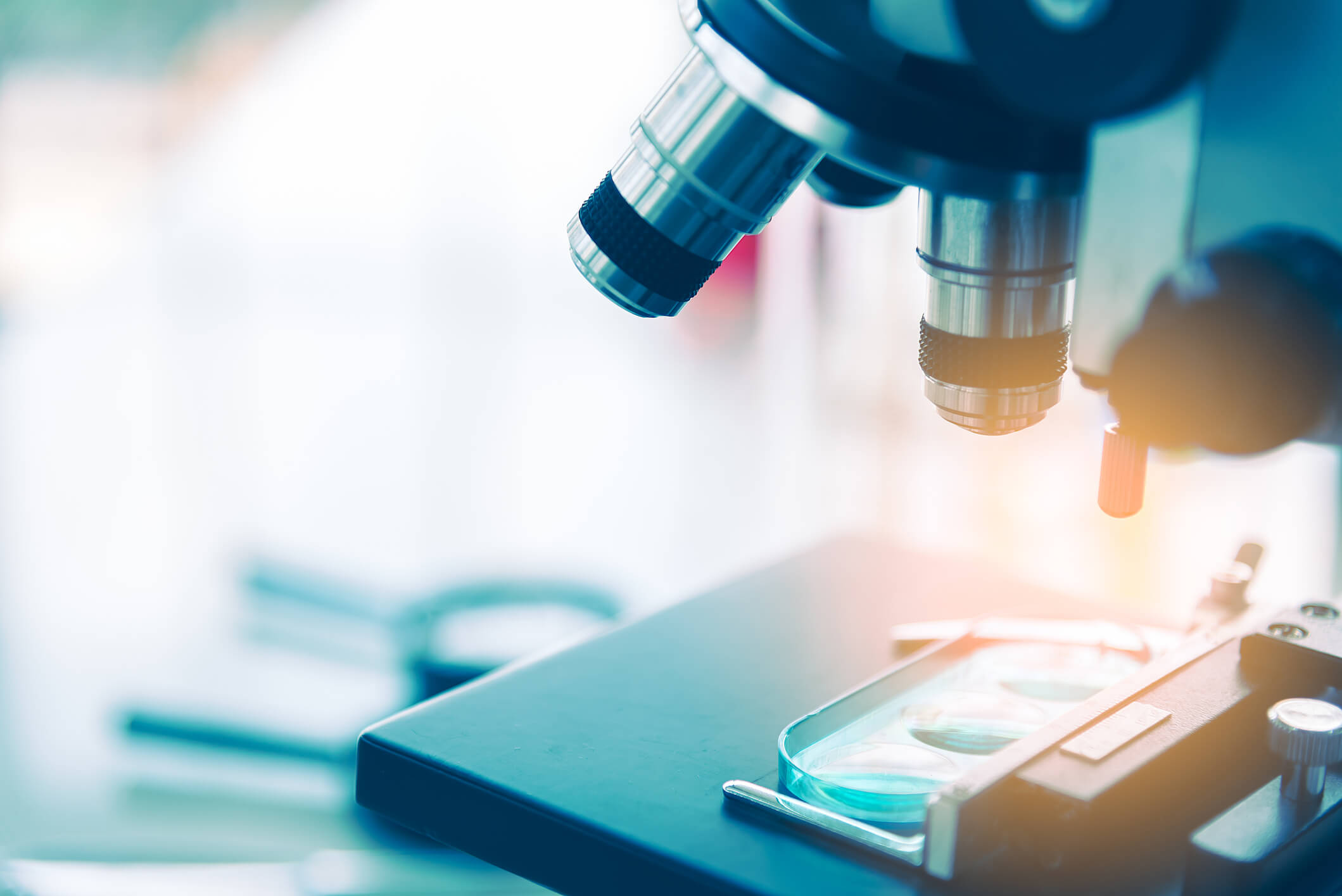
This guide uncovers the major compliance risks along with the systems and KPI metrics that are critical to laboratory managers running an efficient, compliant operation.
Quality control teams are essential to the efficiency and purity of the production of the laboratory.
In this guide, learn how quality control lab managers currently deal with paper-backed systems and how they can use automation to more effectively meet their QC program needs.
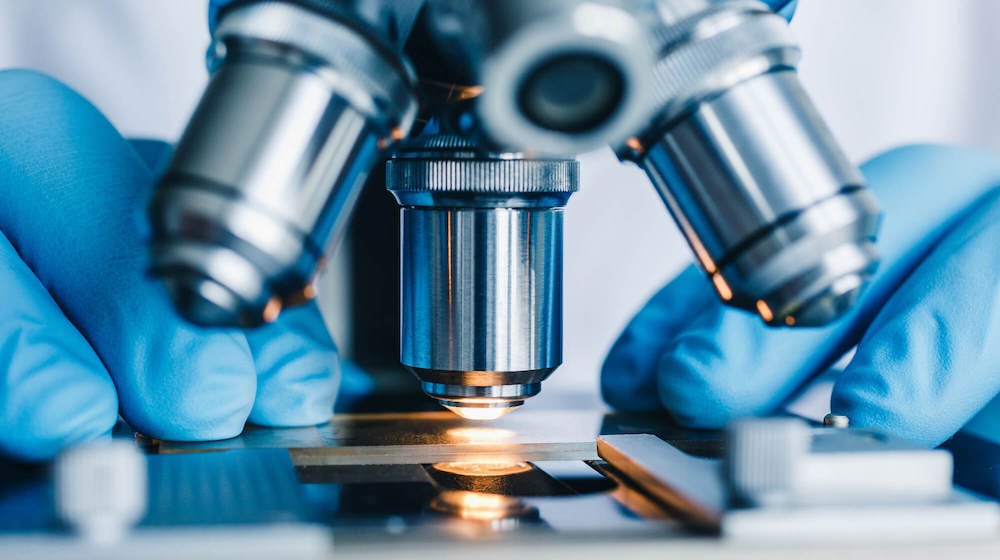
Prior to the digital age, lab data was logged into notebooks that were then locked away in fire-proof safes to protect them from physical damage. This system worked on one condition: scientists, laboratory technicians, and managers wouldn’t lose their notes and remembered to store their notebooks. Ultimately, paper systems are difficult to manage and create risk from generating accurate results as it relies on making no human errors.
There are significant risks that come with reliance on a paper-based laboratory system:
With all of these risks, why do labs continue to use paper-based data logging? Lab managers often believe the costs of implementing a cloud-based LIMS can be too costly for their lab. But what they tend to forget are the hidden costs associated with misplaced notebooks, lost paper files, or the ongoing costs of archiving and storing the paper records.
It bears repeating: The cost of not implementing LIMS technology is not zero. Hours of time can be lost repeating work that has already been completed or when results can’t be easily retrieved or verified. You’ll accrue additional costs to hire a specialist archivist to ensure correct archiving of all paper-based logs. This process often requires extensive indexing and cross-referencing.
Ultimately, laboratory managers also must factor in the cost of inefficiencies and a lack of quality outcomes. With a paper-based system, you put your laboratory’s reputation at risk, along with the fallout should products be released that are, at best, low quality, and at worst, dangerous to consumers.
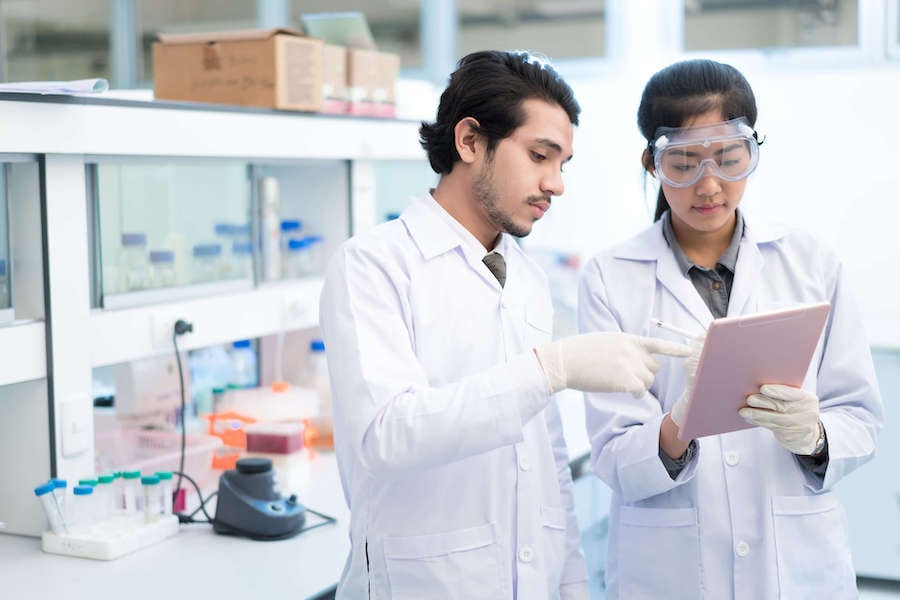
A laboratory’s culture is critical to its success because it can drive how receptive the team is to adherence. How can laboratories be managed effectively? As a lab manager, you can follow these best practices:
Train your team members so they have confidence in their day-to-day activities. This can help build team morale and understanding of the process, structure, and a sense of responsibility.
The lab must work together as a cohesive team in order to maintain quality and performance. Individuals are responsible for executing the work but will need to rely on other team members for review.
Implementing a LIMS can store data on sample storage and quality assurance results and give access only to authorized team members, even if they are working remotely. This provides maximum flexibility for individuals to complete their work, which improves quality and efficiency.
You should also use team incentives carefully in a way that promotes the greater good of the laboratory team. The goal is to improve processes in a way that empowers your team as a whole as opposed to simply focusing on increased individual throughput.
Measuring your team’s success is important not only to quantify the work done but to also display the distribution of workload for your individual team members and the team as a whole. The ability to have a system that can share team data and also keep individual data private builds healthy internal competition. It’s also important to choose appropriate key performance indicators (KPIs) that encourage team morale instead of those that promote a toxic work environment. Focus on team-driven metrics united under a common goal instead of throughput metrics.
Additionally, be cautious of choosing KPIs that could be artificially inflated by your team. For example, if you spend time measuring occurrences of investigations, it could focus on individual work, even if other factors cause the investigations, such as faulty equipment. A lab member, in fear of an investigation, may inaccurately document issues. This faulty metric could put the lab can under an audit. It’s ideal to focus on KPIs that improve performance so that your team is motivated to stay positive. Effective lab management helps motivate lab members as a team and encourages transparency among the team so that they can help each other grow, rather than work against each other.
You can use your lab system to track data, which can also give your lab insight into efficiently provide accurate and precise, high-quality results.
Data helps eliminate bottlenecks and errors to improve the lab’s quality and efficiency performance. To do so, you’ll need to first establish the priority of goals and the data utilized. As a lab manager, you should set KPIs that will serve as benchmarks for your team.
What KPIs should you set? That depends on your lab’s specific environment, its needs, and the problem you help solve.
Consider these questions when determining your KPIs:
#1: What should we measure so that the team is motivated and encouraged to perform at a high level? |
#2: Are these objectives attainable and reasonably set? |
#3: Do these KPIs encourage only positive changes? Could they motivate team members to adopt poor behaviors? |
Some common KPIs in laboratories include:
Backlog – Bring efficiency to your lab’s workload and task distribution. No individual’s capacity should be overloaded, and that the laboratory is neither overperforming nor underperforming. A simple graph of backlog data can reveal potentially telling peaks and troughs.
Length of time – Understand the full time it takes for a batch of samples to be released. This information can be documented by your LIMS, so you can develop forecasts and maintain a commitment to your lab’s execution.
Right First Time – The concept of ensuring that a procedure is performed the first time correctly and every time is referred to as First Time Right (FTR) and originates from Six Sigma. What is the number of experiments or tests that get sent back for review or correction? Labs are more efficient if the measurements and associated documentation are following processes correctly the first time. FTR makes it easier to see the patterns in the review process—and know exactly what needs to be improved upon or changed.
Collecting data and visualizing it for the team gives you a transparent look into what’s working and what needs optimization.
Building visual digital dashboards for your lab can show your team the progress of the their work at any point in time, as well as the trends of your established KPIs. You’ll be able to pinpoint issues before they become significant problems.
You can use your LIMS to build dashboards since the data is centralized and automates lab management monitoring of the progress of each sample’s lifecycle. Using this information, lab managers can reallocate work within the LIMS as needed to fill in gaps. Dashboards also track quality and efficiency metrics to identify whether the lab is improving over time.
A good LIMS will enable lab managers to create their own dashboards that cover the KPIs and lab management metrics that are key to their environment, as well as change what’s being measured as focus moves from one area of improvement to another.
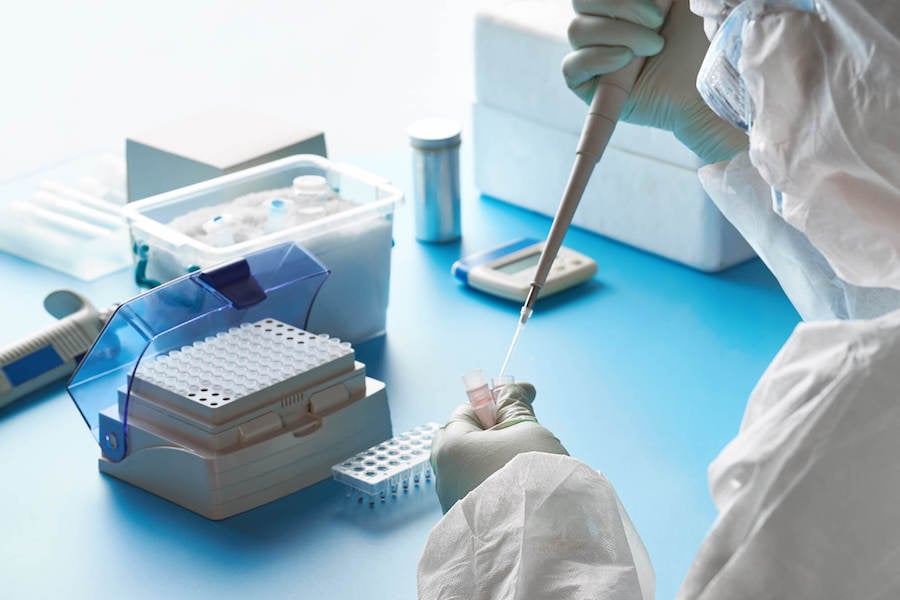
The lab testing dashboard helps the lab manager to stay informed about daily operations within the lab. It serves as a snapshot of the lab’s status, including the number of ongoing and completed tests, the status of tests, and the tests that remain to be done. LabWare’s lab testing overview dashboard features easily digestible charts that make it simple to obtain and process relevant information.
The lab testing overview ultimately serves to keep the lab manager well-informed on all operations, but the advantages are not limited to one individual. Employees can benefit from viewing this dashboard to stay accountable. Analysts have the opportunity to review what work has been assigned to them and what still needs to be completed. In this way, individuals have a resource to help them stay productive and supervisors can stay up-to-date on the general workload.
The lot management dashboard presents information about the lots of products your lab processes. Conveniently review the products your lab has finished, the status of product development, and more. This system also records the number of samples received, analyzed, and those that require review. Additionally, lab managers can view the lot management dashboard to see which lots are ready to be released. Easy to navigate and understand, this dashboard encourages efficient operations within your lab.
Similar to the lab testing overview dashboard, lab managers have the freedom to select what data appears on the dashboard gauges and charts. Even better, managers can create new measures based on almost any criteria and easily change what the dashboard looks like. The chosen gauges are linked to metrics that measure the current state of your lab in real- time. Of course, KPIs are specific to each lab, so gauges are configurable based on what metrics matter to you and your team.
LabWare’s stability management dashboard shows the status of active stability studies, including details about each test the lab has undergone. Once again, metrics can be configured to meet the needs of the user. Customizable graphs appear on the stability management dashboard and the design status of various studies can be reviewed, whether already approved or in creation. Details of recent and future stability pulls are displayed to aid in the planning of work and identify upcoming peaks that may require additional effort, giving a customizable dashboard that gives an instant view of actual stability work being planned and underway in one place.
The quality oversight dashboard gives lab managers the flexibility to tailor the dashboard to meet their needs. Among the numerous capabilities of this dashboard, users can review metrics and receive a report that can be conveniently exported to Excel. Equally useful is the ability to access a detailed summary of a lab’s, department’s, or entire organization’s current situation that keeps managers at all levels informed in real-time.
At the top of the quality oversight dashboard is a list of the KPIs that should be specific to the lab, department, or organization. Users will see a high-level number in the table that is produced based on what it is an organization wants to measure. The gauges on the right- hand side of the dashboard are useful visuals to quickly communicate the status of a metric. The acceptable (green) gauges and unacceptable (red) gauges can be adjusted. Number placements on the gauges can be customized to accommodate cases where a higher digit might indicate a less desirable outcome.
As with all the LabWare dashboards, the displayed values in the table, graphs, and gauges are configurable on a per user basis, so a departmental head can monitor what’s important at a higher level than a Lab Manager driving daily operations. Different labs may decide on different metrics to represent their KPIs and therefore have a dashboard that is meaningful to that lab. The configuration and ease of measuring, displaying and ongoing monitoring of KPIs help laboratories and organizations drive change and performance using real data.
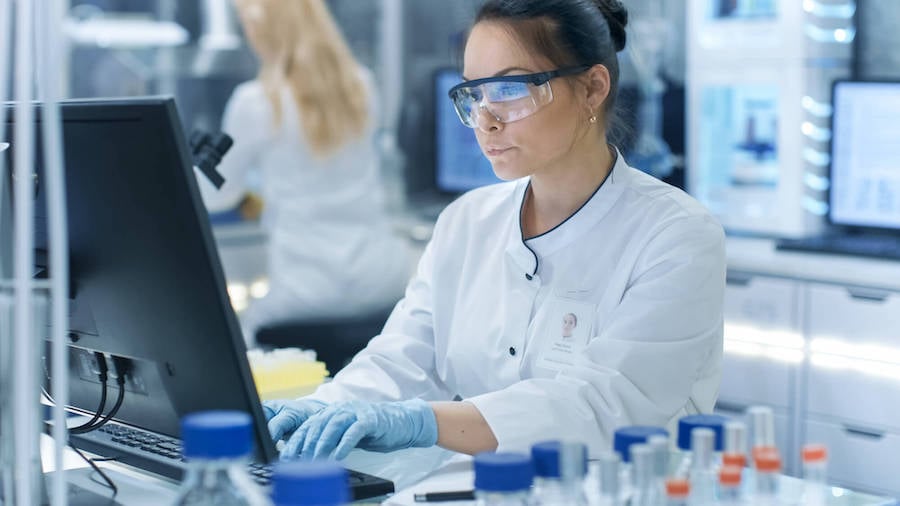
Automation can be a valuable component of a successful quality control program. QC automation works best with successful preparation and a system to support it. Remember - just because you can automate a process, it doesn’t mean that you should. First, set your automation goals:
The lab manager holds a high-level view of laboratory processes in order to authorize any need to intervene. If you’re looking to implement QC laboratory automation successfully, it will involve a hands-on approach from the lab manager. Why? They need to first determine that correct metrics are in place to track performance quality trends and understand where quality can be improved.
There needs to be a balance between the need for automation with the need for manual processes - both must work together to provide the best quality product. After all, the most rigorous process with the best quality and efficiency outcomes is achieved through a marriage of manual processes and LIMS automation; this approach is particularly important to avoid heavy customization or inefficient manual interactions.
Overall, the manager’s perspective gives them authority to redesign processes with people, instruments. Understanding the different capabilities that a LIMS provides, the lab manager can optimize for these elements - the lab makes sure that every lab sample is reviewed and checked for quality and those quality standards are enforced across all workflows.
An efficient lab manager that leverages the power of LIMS automation when appropriate can help save the lab time and resources, intervene prior to human error, and enforce quality performance.

Your lab can use a LIMS to help drive laboratory compliance with regulations and best practices. There are three areas where using a system can assist:
Organization in your laboratory identifies which best practices may be carried out using a LIMS. Data should be standardized and collected by defining and configuring the required and desired parameters so that your labs can use the LIMS to record data consistently over time. Your lab will need to maintain accurate records of the chain of custody— from sample receipt through storage, testing, and disposal. A LIMS helps eliminate the confusion and error-prone ways to manual documentation by attaching barcodes for individual samples to provide better accuracy, consistency, and accountability.
Visualization helps lab managers and the overall team report on sample testing and usage, ultimately to recommend optimizations. The ability
to collect electronic data helps document visible trends that can be used to improve lab operations or intercept compliance issues before an audit. Compliance data is visible and transparent for all users, so everyone in the lab can view the information they need to ensure compliance with best practices. The visualizations can also track KPIs to show progress and opportunities for improvement within the lab.
Automation helps remove human error and provides additional capabilities for documentation. With a LIMS, your lab can capture more details than could be captured manually—and the data is more accurate, especially if the LIMS is integrated with lab instruments and software. A quality LIMS can also notify the manager of any items that fail specifications so that they cannot be released without further review.
LabWare LIMS is designed with best practices and principles determined by GLP, GALP, cGMP, and ISO 9001:2000, as well as the FDA and MHRA Data Integrity guidelines. With LabWare, your lab is able to:
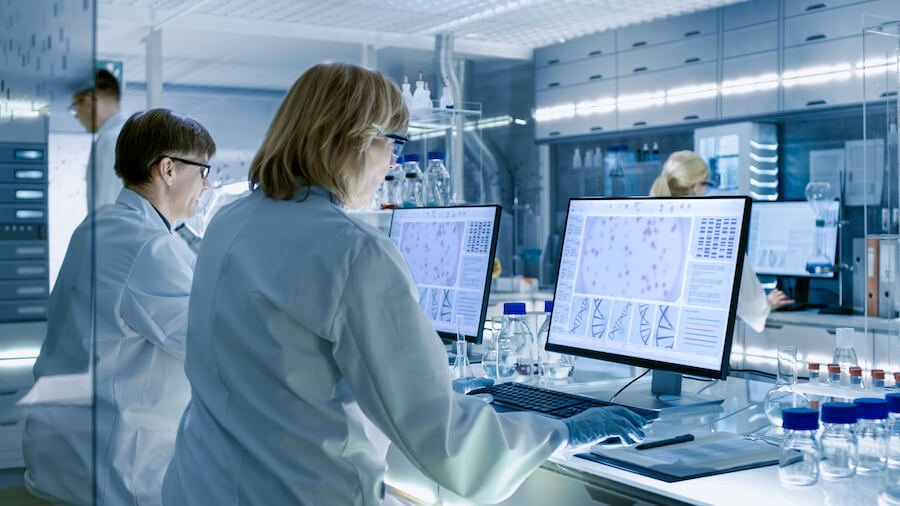
How do quality control lab managers use LIMS to their best advantage?
The right systems need to be in place to track the samples being tested, the assignments of those samples to scientists, and the specific attributes to be tested. It is also important to make sure that automatic systems are implemented to maintain sample testing timelines and ensure that the right testing is performed and completed on time. Ideally, the results of any tests are stored alongside the samples.
These details need to be documented in a manner that can be easily presented during an audit to demonstrate laboratory compliance.
A LIMS solution can track where the sample is, how stable its storage is, and monitor any work that has begun on it. If the sample moves from one lab to another, automatic tracking through the LIMS can help keep documentation smooth and simple. When working with higher-risk samples, such as toxic chemicals or biohazards, LIMS can keep track of whether they have been properly disposed of and how the disposal occurred.
Quality control is a critical part of a larger chain of production in many industries. As such, it is vital that any lot of a released product must meet strict specifications. Good Manufacturing Practice (GMP) requires manufacturers to assure that their products are consistently high quality, from lot to lot, and specify that the manufacturer must maintain proper documentation and records. Testing results need to be tied to each sample and detailed and accurate documentation must be readily available, all of which can be handled efficiently through your LIMS.
Sometimes things go awry in pharmaceutical production and the final end product fails to meet specifications, resulting in quality investigations—or worse, product recalls. Having the ability to trace product history through production, storage, and handling can pinpoint problems—or support the need to look elsewhere to find the issue. Because LIMS automatically tracks these properties of samples, traceability is intrinsic to the laboratory workflow.
It’s not only laboratory audits that benefit from the documentation afforded by the quality control capabilities of a LIMS. If the results generated from testing include something atypical, the LIMS can help investigate why that particular result occurred, perform additional testing to determine if it’s a singular batch issue or a larger laboratory issue.
The investigation efforts can be documented and stored as part of the sample’s history for future reference, whether for applications or for audits. Capturing deviations allows a QC lab manager to take action and address issues prior to batches failing specification.
LIMS implementations can track and analyze the historical data stored in the system, which helps lab managers identify trends over time.
If there are any recurring issues involving samples, having access to these time trends can help pinpoint the source of problems. Problems can range from supplier issues, human error, instrument malfunctions, or inconsistencies in hardware. Tracking data over time does not just improve quality in the moment, but it also allows access to trends that can anticipate future issues. QC lab managers can respond by taking more holistic corrective actions to positively influence laboratory quality.
The sample data that a LIMS records are immediately compared against the expected specifications. This immediately highlights if unexpected or undesirable results have emerged. In turn, the laboratory can leverage this built-in LIMS quality control to immediately respond to the problem.
Due diligence and investigations on samples are easier to carry out effectively when they happen practically in real-time, as opposed to the weeks of lag that can result in a best-case scenario with manual documentation. LIMS allows you to enter in the ranges of acceptable values for testing results so that any intolerances around the specifications or warning limits can flag potential issues as soon as you input the sample result.
The fact that a LIMS automatically captures data electronically from laboratory instruments allows for more timely data entry at regular time points, and to greater levels of detail as opposed to manual documentation. By eliminating human transcription, errors are avoided, additional checks are reduced, and associated metadata can be captured immediately.
A LIMS implementation removes much of the potential for error. When your staff needs to examine the record later, the human error associated with it can be eliminated. Instead, the manager or lab member tracking down any issues, errors, or deviations can focus on instrument calibration or other characteristics of instrument operations and laboratory protocols to identify the source of the problems.
LIMS quality control features can even empower a laboratory to develop a managed process for monitoring calibrations and ensuring laboratory-wide precision. This also incorporates a checkpoint where instruments cannot be used until they meet calibration requirements defined in the system. An uncalibrated machine can introduce extensive errors downstream or disqualify results that have been generated.
Not using LIMS quality control features leaves documentation and tracking in the hands of humans who are prone to error, even in the best laboratories. Every lab member will experience stress at some point, which negatively impacts their work overall. Under stress, people tend to be more forgetful, prone to mistakes, and may even deliberately cut corners even if they know they technically should not. The last thing you want is to fail an audit, particularly for something that’s easily preventable through automation and built-in controls.
Another aspect of how LIMS quality control interacts with an overburdened lab staff is through monitoring for problems. If major or consistent sample issues are detected, you may effectively end up with direct measurement of your laboratory’s capacity. Without measurement, it can be difficult to understand their scope or see how overworked they are. You may just think your lab is very busy when some of your staff are actually overworked. Looking at the sample trends automatically documented in LIMS can shed light on this.
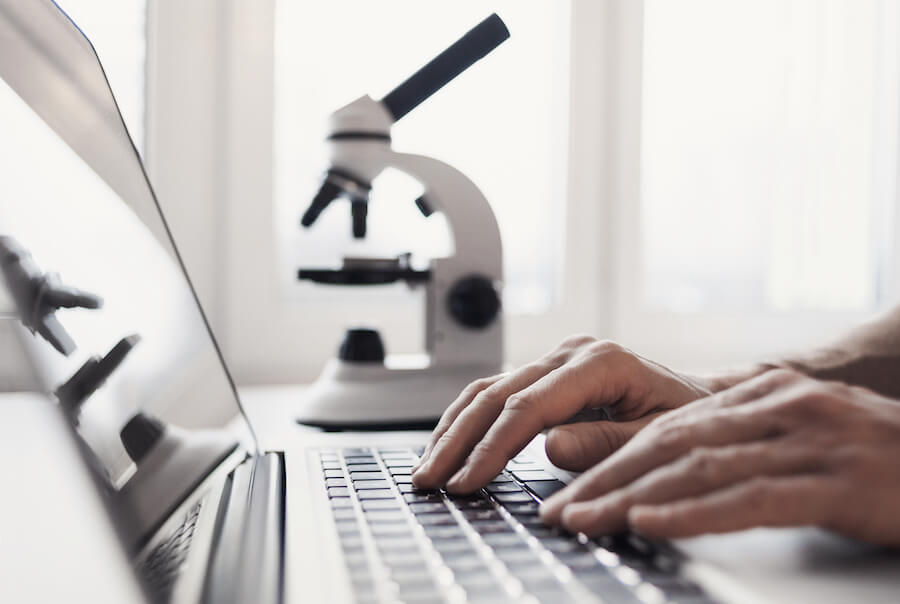
By utilizing the capabilities of cloud technology, many laboratories are embracing the ability to conduct lab work across multiple locations—effectively expanding their working hours around the clock.
What are the benefits of utilizing multiple locations for work?
Faster Review: Experiment review can be handled by centralized teams that do not have to be in the same location as the scientists. Staff located in the United States can review experiments conducted in the United Kingdom to minimize the data turnaround time for critical activities such as responses to regulatory agencies.
Recruiting Opportunities: Your organization is not limited by geography to attract the best talent. Working remotely can also be a benefit: Employees that work remotely full-time are reported to be 22 percent happier with better work-life balance, less stress, and more productivity.
Cost Savings: Using remote staff can help reduce infrastructure costs if many of your staff do not need to come into an actual lab.
Resource Agility: You can adjust your lab’s contract work based on demand. When there is additional demand, you can look to scale your operations and use contract staff instead of hiring full-time employees.
It’s important to understand that a remote lab environment differs from a physical lab, so it requires an environment that supports remote work to result in increased productivity and collaboration.
Here are some ways to set up your remote lab for success: